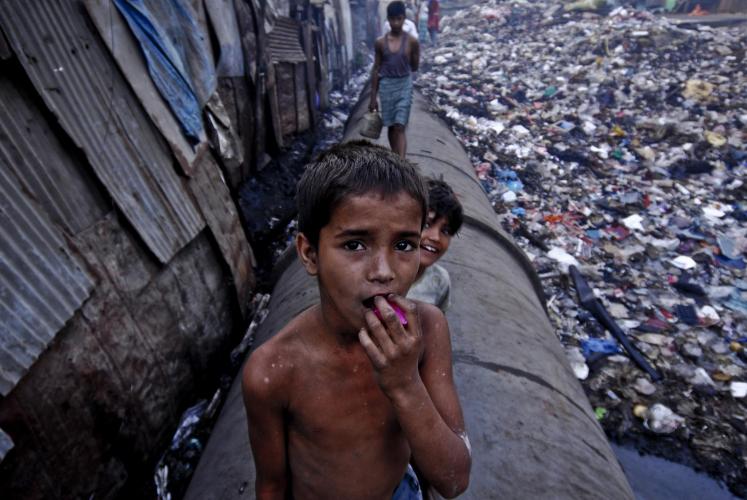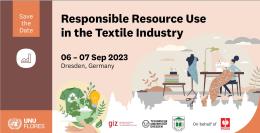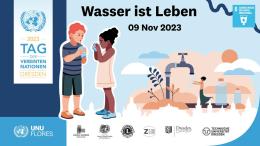There’s an old saw about sausages being delicious but it being better not to delve too closely into how they are made.
To date, the Sustainable Development Goals (SDG) process, leading up to their finalization at the September 2015 Summit, has been unsteady, worrying (even for insiders) and has exhibited many of the worst pathologies of UN sausage-making.
The Millennium Development Goals
It is too often forgotten that the original Millennium Development Goals (MDGs) emerged in their final form not at the UN’s Millennium Summit, but in a September 2001 report of Secretary-General Kofi Annan. The report drew goals and targets from the text of the Millennium Declaration, and added indicators developed by experts.
It proposed 8 headline goals, a number of practical targets and scientifically sound indicators by which the targets could be measured.
Amidst some grumbling by certain member states (notably the USA) that the Secretary-General had exceeded his authority in advancing a list of specific goals that had not been negotiated as such among member states, the General Assembly responded without undue enthusiasm in early 2002 suggesting that the Secretary-General’s approach could be a useful “roadmap” for the international community. Thereafter, nothing much happened, and inducements to adopt the goals in practice were notably absent. This problem was addressed in 2005, when the G-8 announced a major $40 billion debt forgiveness initiative for lower-income countries at a summit meeting hosted in the UK.
Those goals have been unevenly met, to put it charitably, although the target of halving the number of ultra-poor around the world was attained well ahead of time due to China’s spectacular success in lifting hundreds of millions of its own citizens out of these ranks. But in areas such as maternal health, in spite of much fanfare and myriad initiatives, success has lagged woefully. To their credit, UN Secretary-General Ban Ki-moon and World Bank President Jim Kim as of 2012 worked hard to accelerate implementation of the MDGs, but results of this late spurt are bound to be marginal, albeit positive.
The great appeal of the MDGs was in their essence as a fairly compact program of action of governments. As John McArthur reminds us, the MDGs did, to an extent, mobilize heads of government, philanthropies and businesses to provide funding for targeted solutions to practical problems (e.g. addressing malaria prevention), often under pressure from NGOs. In countries with a vibrant civil society, specific goals could be adopted as battering rams to goad often lethargic parliaments and governments into action. They were relatively easy to communicate, and the indicators were on balance helpful rather than the reverse.
The SDG Process
The current process got off the ground with the Rio+20 conference in 2012, which called for a new generation of goals heavily imprinted by environmental concerns, notably climate change. This smacked of an attempt to hijack the wider development agenda, but RIO+20 made at least one far-reaching, positive suggestion – that the new set of goals apply to all countries, not just the developing ones of the Global South.
A month later, in July 2012, the Secretary-General convened a High-Level Panel (HLP), a well-used UN vehicle to study high-priority, but frequently intractable issues, co-chaired by the leaders of Indonesia, Liberia and the UK. This panel, with an excellent staff, drew on an array of sources, to produce a bracing, original analysis of the state of development, particularly relative to changes since 2000.
One useful lesson I took from their May 2013 report was that issues of quality (of public services, for example) were now just as important as those of quantity (say, of children enrolled in primary and secondary education). This was real evidence of progress in the achievement of development.
Another useful dimension of the report, as emphasized by John Norris, Molly Elgin-Cossart, and Casey Dunning, is that it makes clear that all countries would be equally accountable for progress within their societies in realizing the goals, rather than “developing countries” being isolated under the microscope.
Goals, Targets and Reports Galore
Alas, the HLP also was moved to advance a set of sensible indicative goals (12 in all), targets and indicators of its own. Not having taken the opportunity of the Millennium Summit to develop inter-governmentally designed and agreed goals then, the HLP set off a strong desire among the representatives of member states in New York to craft their own goals, targets (and perhaps indicators), under the umbrella of an Open Working Group (OWG).
This worked considerably less well, as the negotiating style of member states favours accumulative drafting, accommodating as many interveners as possible. Result: 17 goals and nearly 170 (!) targets, many of the latter unscientific or unhelpfully sweeping. The group was well chaired by two seasoned ambassadors (Kenya and Hungary), but the outcome was dire. And it was widely derided. One wag pointed out that the target of eradicating AIDS by 2020 would require executing those infected with HIV but still alive in that year!
What government can cope with 17 headline policy goals and nearly 170 targets? Matters were made even more nonsensical when, in response to widespread criticism that, at best, this aggregation of national positions could serve as a “menu of options”, some of the ambassadors responded that the whole package was mandatory for all member states – hubris apparently not being a problem in the world of sovereign plenipotentiaries. And to the criticism that 17 goals were too many to convince or even interest international public opinion, some responded that this was a mere “communications” challenge (presumably to be overcome by the Secretary-General).
Because negotiations had been tremendously arduous, even those ambassadors with instructions from their capitals to “reopen” the agreement so as to reduce the number of goals were disinclined to follow them.
The Secretary-General was then left with the unenviable task of trying to make sense of the wreckage for wider publics. This he did in early December 2014 by advancing a “synthesis” report highlighting six elements (or imperatives), which sought to touch on all or most of the OWG’s goals. This effort, spearheaded by the admirable Amina J. Mohammed of Nigeria, the Secretary-General’s Special Adviser on Post-2015 Development Planning, was successful in synthesizing the material, but suffered somewhat from UN drafting characteristics, with the meat of the report only appearing late in a 50+ page report. Much throat-clearing was devoted to praising the wisdom of the member states and their OWG effort.
The member states now start all over again. One would normally have lost interest at this point. However, there are some hopeful signs. Member states have apparently blessed a move to bring in the UN’s statistical commissions which can devise scientifically convincing indicators from which more precise and useful targets could be distilled. Secondly, with the approaching deadline of the September 2015 Summit now looming – the Summit is to bless the post-2015 package – national delegations may approach the current round of talks more pragmatically.
Some reflections
The MDGs were produced through a secretive process involving very few pens (although there was considerable consultation beyond the UN itself). The result was good. The High-Level Panel produced an exciting analysis, again thanks to a number of talented pens and some excellent high-level direction. The OWG inevitably produced a pudding-like product, indigestible and shapeless. Committee drafting is like that. But the member states so much wish to be in charge that they can’t see the benefit of high-quality staff work. And the UN may be stuck with the outcome. Meanwhile, as there is always a flight from responsibility within large committees, nobody is to blame.
In spite of a world in which the developing countries have been outstripping expectations of economic performance and in which most of the industrialized economies have been underperforming worryingly since the financial and economic crisis initiated in 2007-2008, negotiations on many economic and social issues still unfold at the UN in the immediate post-Colonial format of the Group of 77 (actually over 130) developing countries and China against the rest. North-South confrontation is the unending dynamic of these discussions, no longer in any sense corresponding to the real world, or even often to the policies of the countries involved. No wonder the outcomes disappoint. Can anything change this? Old dogs don’t easily learn new tricks, especially within national bureaucratic environments, and even less within the bubble of the UN.
One significant challenge in looking ahead will be how to hold the world’s governments accountable relative to agreed goals and targets. This did not work well (if at all) for the MDGs. Ideas of peer review across specific issues have been mentioned as an alternative to national peer review (which occurs in the Human Rights Council, helpfully in my view) and might prove useful. Nevertheless, the UN membership has generally shied away from mutual accountability and the implied criticism involved, and this instinct applies as much to the United States – which is often allergic to submission of its national performance to international review, even when this reflects positively on the USA overall – as it does to Cuba.
Having gotten off to a poor start, in spite of good ideas at Rio+20 and from the HLP, and real effort by the member states to engage with the subject matter, it behoves the member states and others involved now to stand back, assess where we are, and see how a sharper, more compelling post-2015 Framework crafted at the UN could stand the test of time and relevancy over a 15-year period.
Sadly, we are not yet close to an outcome that would achieve these modest expectations.
And if the 17 goals and myriad targets stand as the final outcome, the result, not such a bad one, will be that the member states (as opposed to their delegations in New York) will inevitably treat them as a menu of options, to be selected à la carte. Some goals will be much more important to certain countries than others, and relative levels of development will be important in determining which. Denmark needs to worry more about some, and Cameroon about others. C’est la vie!
Suggested citation: Dr David M. Malone., "The Sustainable Development Goals: Gruesome Sausage-Making?," UNU-CPR (blog), 2015-02-26, https://unu.edu/cpr/blog-post/sustainable-development-goals-gruesome-sausage-making.




